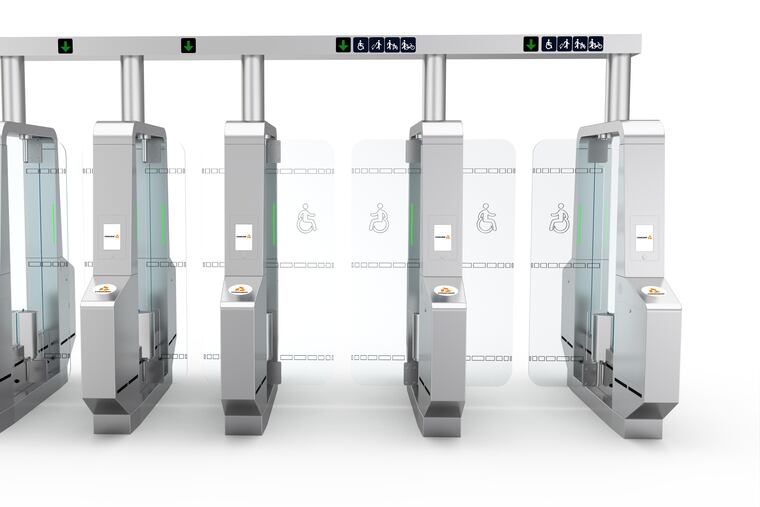SEPTA turnstile jumpers, beware. Gates taller than Joel Embiid are coming to El stations.
SEPTA has lost an estimated $22.9 million in revenue since last July due to fare evasion.

SEPTA has lost an estimated $22.9 million in revenue since last July due to people who jump turnstiles, piggyback on someone else’s Key Card, or breeze aboard a bus or trolley without paying.
To combat the problem, the transit agency plans to install tall fare gates at two Market-Frankford El stations that no human could hurdle. They stand about 7 feet, 8 inches from the floor to an overhead gantry containing electronic sensors. That’s eight inches taller than Sixers giant Joel Embiid and just slightly shorter than the 8.25 feet cleared by world record high jumper Javier Sotomayor.
And there’s not enough room for a sneaky fare evader to crawl under it.
“We’re piloting the gates at these locations to get a sense of how effective it is at deterrence,” said Andrew Busch, spokesperson for the transit agency. If it cuts down evasions, “we’ll be able to scale it up.”
SEPTA needs the money, but it also does not want customers who pay their fares to feel like chumps for doing the right thing.
“You don’t want to get to a situation where people are asking why do they bother to pay,” Busch said. “We value them.”
In addition, experience shows that fare jumping is often a precursor to other “bad acts,” from assault or robbery to quality of life violations like smoking on the train, he said.
SEPTA Transit Police issued 2,792 theft-of-service citations to fare evaders in 2022 and has handed out 355 through February of this year, though most offenders are not caught. The citations carry an administrative fine of $25, similar to violations such as disorderly conduct on the transit system and public urination.
The likely loss since this fiscal year began July 1 is $22.9 million on the system as a whole — $12.5 million of it on the two subway-elevated lines, according to SEPTA’s finance department. That would mean about 20% of fares on rail transit go unpaid, and around 6% on bus, trolley lines, and the Norristown High Speed Line.
Counting lost revenue is not a precise endeavor. Officials make estimates by comparing the number of people aboard transit vehicles as captured by passenger counters to the amount of fares collected via Key Card taps, quick-trip cards, and cash.
The new gates could help narrow down the numbers, as they are built to take 3D images of people, strollers, suitcases, and wheelchairs moving through them; those who manage to foil the gates will be counted. (The images are not pictures suitable for enforcement, but alarms will blare if someone gets through by drafting behind another passenger.)
Families traveling with children under age 12 — who ride SEPTA free — will pass through the ADA lane on the new fare gates just as they currently do.
SEPTA’s board on Thursday approved the purchase of 22 of the vertical gates from Conduent Transport Solutions Inc. for $924,950. They are expected to be installed in their test locations late this year or early in 2024, Busch said.
Sixteen of the gates, eight for each side of the platform, are destined for the 13th Street Station El stop, and three of them will be placed on either side of the mezzanine at the 34th Street Station El stop.